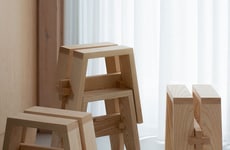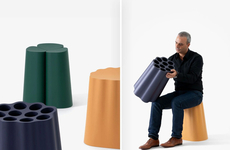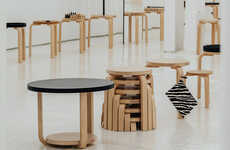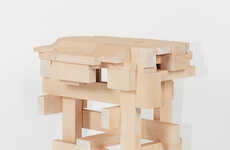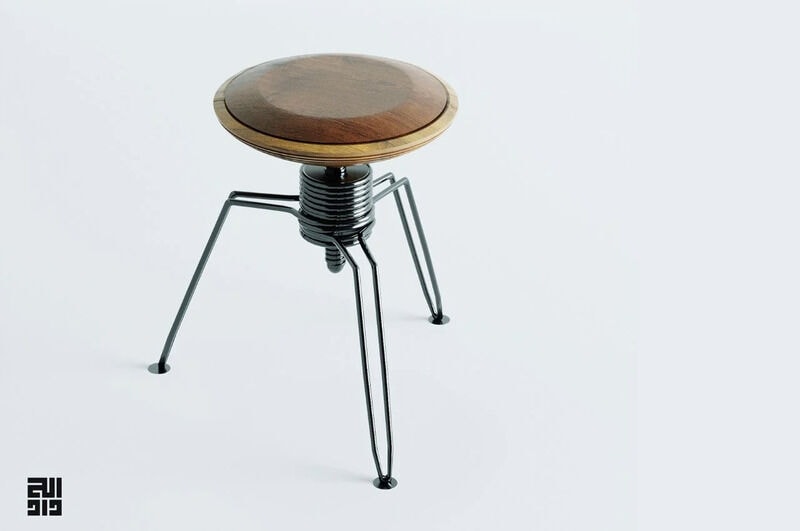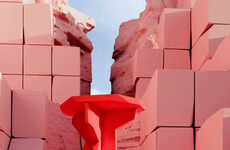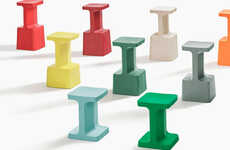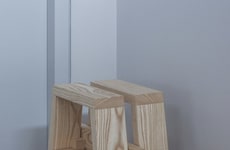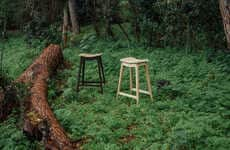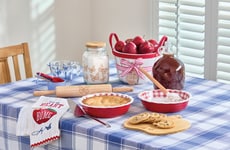
Mohamed El-Haddad Designs the El Nahla Stool
Kalin Ned — July 18, 2023 — Art & Design
References: behance.net & yankodesign
Design has been celebrated by many for its ability "to evoke emotions that transcend cultural boundaries" and designer Mohamed El-Haddad embraces this with The El Nahla Stool, a stool design inspired by the spinning top game. The furniture piece "pays homage to cultural heritage while embracing global appeal." Created as part of CLUSTER's project in Cairo, this stool aims to bridge the gap between formal and informal economies.
The spinning top, which is a timeless and cherished toy, serves as the inspiration for The El Nahla Stool. The stool features a height-adjustable design, making it versatile for various interior spaces. The stool's combination of ancient inspiration and contemporary design blends cultural heritage with modern aesthetics.
Image Credit: Mohamed El-Haddad
The spinning top, which is a timeless and cherished toy, serves as the inspiration for The El Nahla Stool. The stool features a height-adjustable design, making it versatile for various interior spaces. The stool's combination of ancient inspiration and contemporary design blends cultural heritage with modern aesthetics.
Image Credit: Mohamed El-Haddad
Trend Themes
1. Height-adjustable Furniture - Designers can explore incorporating height-adjustable features into furniture to provide versatility for various interior spaces.
2. Blending Cultural Heritage with Modern Design - There is an opportunity to create designs that pay homage to cultural heritage while embracing global appeal, combining traditional inspiration with contemporary aesthetics.
3. Bridging Formal and Informal Economies Through Design - Design projects can aim to bridge the gap between formal and informal economies, bringing new concepts and products to both sectors.
Industry Implications
1. Furniture Design - The furniture design industry can explore incorporating height-adjustable features into their products to cater to a wider range of interior spaces.
2. Interior Design - Interior designers have the opportunity to create spaces that seamlessly blend cultural heritage with modern design, providing a unique and inclusive experience for their clients.
3. Economic Development - Design projects that bridge the gap between formal and informal economies can contribute to economic development by creating new opportunities and products for both sectors.
3.7
Score
Popularity
Activity
Freshness


